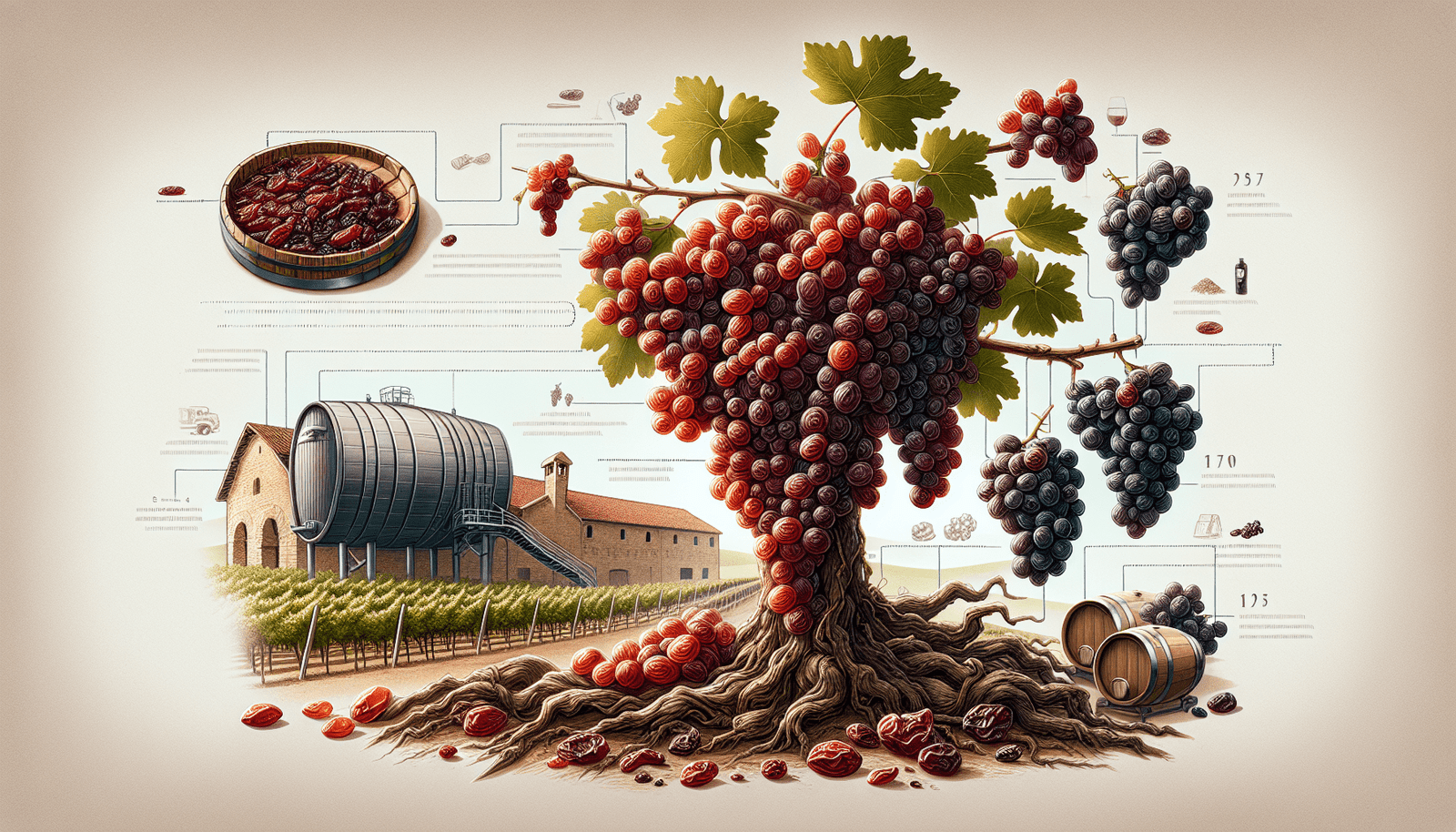Imagine yourself in the enchanting region of Veneto, Italy, surrounded by picturesque vineyards and quaint villages. In this idyllic setting, the origins of Amarone della Valpolicella take root. This renowned wine, known for its bold and complex flavors, has a rich history that spans centuries. From its humble beginnings as a byproduct of the winemaking process to a beloved and respected wine in its own right, Amarone della Valpolicella has evolved into a symbol of excellence in Italian winemaking. Join us as we explore the fascinating journey of this wine, from its origins to its modern-day eminence.
Origins of Amarone della Valpolicella
The Valpolicella wine region
The origins of Amarone della Valpolicella can be traced back to the Valpolicella wine region in northeastern Italy. Situated in the Veneto region, Valpolicella is known for its stunning landscapes and a history dating back centuries. The region is characterized by its hilly terrain and ideal climate for viticulture, with sunny days and cool nights that contribute to the ripening process of the grapes.
The traditional winemaking process
To understand the origins of Amarone della Valpolicella, it is essential to explore the traditional winemaking process that has been practiced for generations. The process starts with the cultivation of indigenous grape varieties, primarily Corvina, Corvinone, Rondinella, and Molinara. These grapes are carefully hand-harvested and undergo a unique drying process known as appassimento.
During appassimento, the harvested grapes are spread out on straw mats or special racks in well-ventilated drying rooms or lofts. This drying process usually lasts for several months, during which the grapes lose a significant portion of their water content. This dehydration concentrates the flavors and sugars in the grapes, resulting in raisin-like characteristics.
Following the drying process, the grapes are gently pressed, and the juice is fermented at lower temperatures to preserve the delicate aromas and flavors. This process, known as the “ripasso” method, involves refermenting the wine on the pomace (the leftover grape skins and solids) of Amarone, which enhances the wine’s complexity and richness.
Discovery of the Amarone style
The Amarone style of wine originated by chance in the mid-20th century. It is said that a winemaker unintentionally allowed a batch of partially dried grapes to ferment to dryness, resulting in a wine that was significantly higher in alcohol than the traditional Valpolicella wines. This discovery marked the birth of Amarone, a remarkable and robust red wine with intense flavors and a unique character.
Evolution of Amarone della Valpolicella
Introduction of modern winemaking techniques
As the Amarone style gained popularity, winemakers in Valpolicella began to embrace modern winemaking techniques to enhance the quality and consistency of the wine. This included the use of temperature-controlled fermentation tanks, modern grape sorting technology, and advanced aging methods such as aging in small oak barrels.
These modern advancements not only increased efficiency in the winemaking process but also allowed winemakers to have greater control over the fermentation and aging processes. As a result, Amarone wines became more refined, displaying a harmonious balance of flavors and a smoother mouthfeel.
Navigating through challenging periods
Throughout its evolution, Amarone della Valpolicella faced various challenges that tested the resolve of winemakers in the region. One such challenge was the outbreak of phylloxera in the late 19th century, a devastating vineyard pest that decimated grapevines worldwide. Valpolicella was not spared, and many vineyards had to be replanted with resistant rootstock.
In addition to the phylloxera outbreak, Amarone also faced economic challenges during times of political and social instability. Yet, the passion and dedication of the winemakers persevered. They remained committed to producing top-quality Amarone wines, ensuring that the tradition and heritage of the region would continue.
Diversification of Amarone styles
As Amarone della Valpolicella grew in popularity, winemakers began to explore different approaches and styles within the Amarone category. While the traditional Amarone style remained highly regarded, some winemakers experimented with aging techniques, barrel selections, and blending with other grape varieties.
This experimentation led to the emergence of different expressions of Amarone, including single vineyard selections, cru wines, and Amarones aged for extended periods of time. These diversifications provided wine enthusiasts with a broad spectrum of Amarone options, each with its own unique characteristics and nuances.
In recent years, the introduction of organic and biodynamic winemaking practices has also added another layer of diversity to the world of Amarone. These practices prioritize sustainability and harmony with nature, resulting in wines that showcase a sense of place and a deep connection to the terroir.
Conclusion
From its humble beginnings in the Valpolicella wine region to its modern-day evolution, Amarone della Valpolicella has truly come a long way. The traditional winemaking process, discovery of the Amarone style, and introduction of modern techniques have all played integral roles in shaping the growth and refinement of this distinctive wine.
As Amarone continues to captivate wine lovers around the world, it serves as a testament to the dedication and innovation of the winemakers in the Valpolicella region. With its rich history, diversity of styles, and unwavering commitment to quality, Amarone della Valpolicella stands as one of Italy’s most cherished and celebrated wines. So, raise a glass of Amarone, and toast to its origins and ever-evolving legacy. Cheers!

Franco Deville, an esteemed wine connoisseur and author, is the visionary behind “Wines of Madeira.” His extensive background in viticulture and wine tasting enriches his detailed guide on Madeira wines. Franco’s dedication to traditional winemaking and innovative approaches has established him as an influential voice in the wine community.




